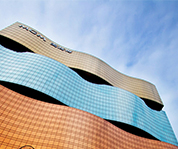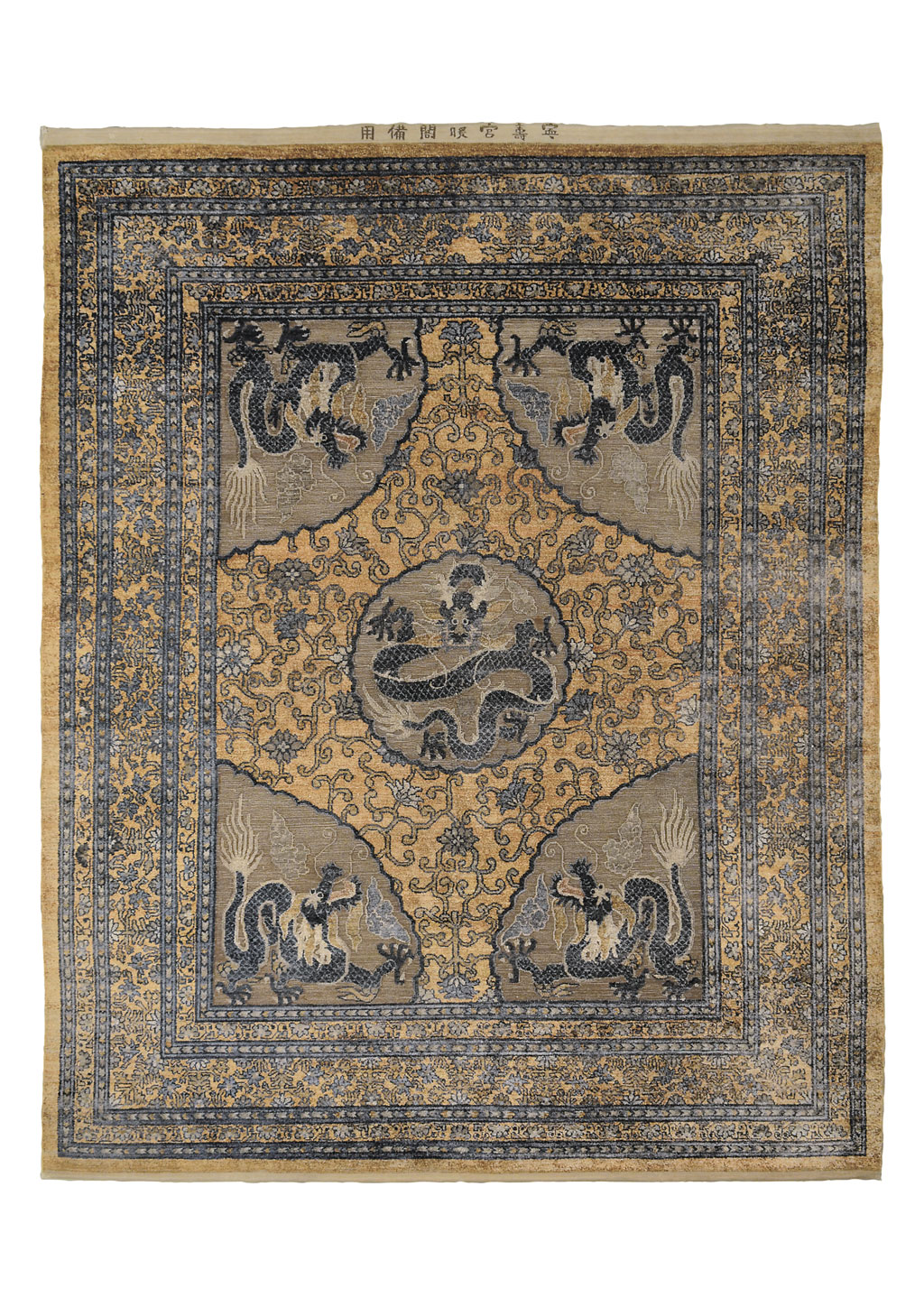Imperial Workshops of Xinjiang
China
Qing dynasty (1644-1911)
Qianlong period (1736-1795)
247 x 308 cm
Asymmetrical knot
Silk pile, gilded copper threads
Cotton warp and weft
Excellent condition,
very small areas of low pile
The inscription reads:
Ningshougong Nuange Beiyong
Made for the Palace of Tranquility and Longevity
Similar carpets:
Dimand, M.S. / Mailey, J., Oriental Rugs in The Metropolitan Museum of Art, 1973, p. 323 catalogue n°224
The Flower of Buddha, Silk and Metal Carpets from the Forbidden City, Textilia, 2006, p. 43 catalogue n°1
Provenance:
Brunk Auction, Asheville.
By descent through the Samuel Wadsworth Russell family of Connecticut.
Russell founded the highly successful China Trade firm of Russell & Co., the largest trading house in China from 1842 until its closing in 1891.
Likely purchased in China by Russell or another family member, it descended to Elizabeth Russell, grandmother of the consignor.
IMPERIAL CARPETS – THE MEANING OF FIVE AND NINE
The main symbol on a carpet usually only occurs five or nine times, like five or nine dragons, five lions, nine phoenixes. Five and nine are two very important numbers within the ancient Chinese numerical description of the world.
Five (Wu) connotes the four cardinal points plus the center, and reflects the Five Agents - Wood, Fire, Earth, Metal, and Water. Each Agent corresponds a spatial direction, a season, a quadrant of the sky symbolized by an animal, a color and, by extension, any element in life that may be arranged within a quinary system.
Representing the fullest expression of yang, Nine (Jiu) is closely associated with heaven in that it evoked infinity, partly because it was the product of three times three, the most basic unit of three being heaven, earth and man, and partly because the number nine was homophone with the word Jiu meaning eternity.







